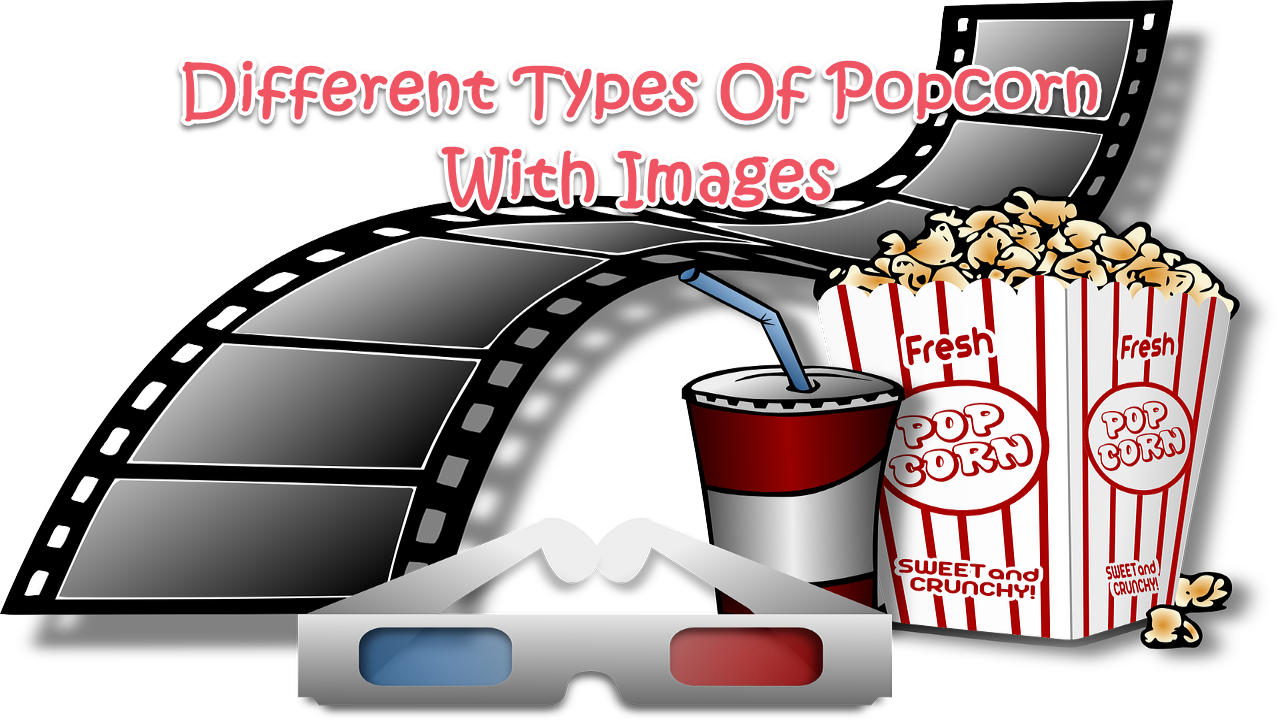When going to cinemas or watching movies at home, popcorn is a popular snack to enjoy. The variety of popcorn types available is what makes it a fascinating snack. You can choose from a variety of forms, textures, and flavors of popcorn.
If you love eating popcorn then this article is for you. In this article, we’ll talk about the different types of popcorn. If you are interested to know what these are, scroll down and continue reading.
Types Of Popcorn
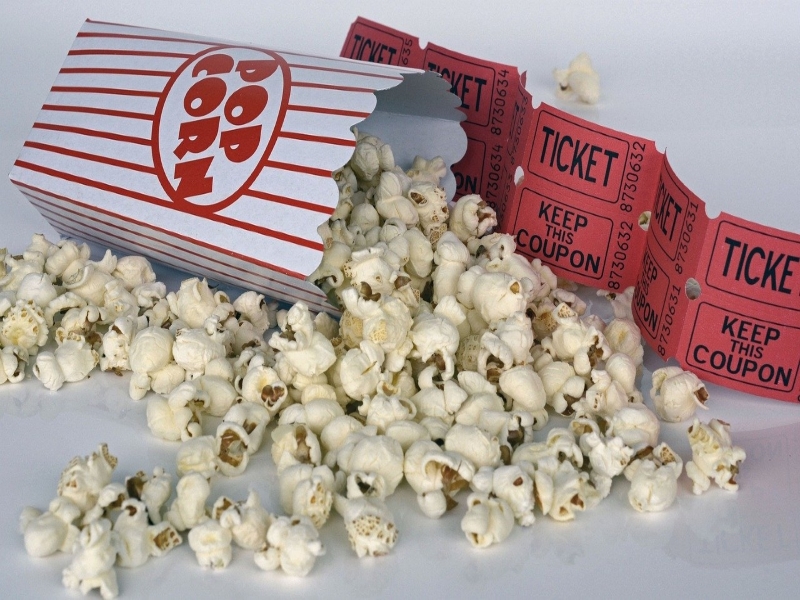
Popcorn
Also known as popped corn, popcorns or pop-corn. Popcorn is a type of corn kernel that puffs up and expands when heated. The word also applies to the food that results from the expansion.
The strong hull of a popcorn kernel encloses the hard, starchy endosperm of the seed, which has between 14 and 20 percent moisture and turns to steam when heated. As the hull ruptures under increasing steam pressure, the kernel is forced to grow 20 to 50 times its initial size before cooling.
Specific corn varieties are grown to produce popping corn. The most popular of these is a unique kind of flint corn called Zea mays variety everta.
One of the six main varieties of corn, along with dent, flint, pod, flour, and sweet corn, is popcorn.
History Of Popcorn
About 10,000 years ago, in what is now Mexico, corn was domesticated. Archaeologists have found evidence of popcorn consumption dating back thousands of years. Evidence from Peruvian fossils suggests that corn was first popped 4,700 B.C. Native Americans have known how to prepare seeds for millennia by using plants like amaranth and goosefoot. These seeds were ground into flour, boiled, toasted, and even popped like modern popcorn with the addition of sap and spices to enhance flavor and consistency. Brass kettles or animal stomachs were used instead of cast-iron kettles at that time.
Popcorn started being sold as a street snack in the 1880s. The next years saw a significant rise in popcorn accessibility along with the introduction of popcorn machines and equipment for manufacturing it.
American consumption of popcorn increased by three times during World War II due to the fact that it was relatively inexpensive. Popcorn was gradually introduced into movie theaters and was formally accepted as a symbol in 1938.
However, popcorn sales decreased in the 1940s as the number of televisions in homes rose. Yes, you heard it right, popcorn consumption fell as the number of TVs rose since at the time, people only loved popcorn at the movies.
As a result, the Popcorn Processors Trade Association came up with an approach to work with Coca-Cola to transform popcorn into a nutritious snack that can still be consumed at home.
Popcorn consumption increased as a result of a collaboration with Coca-Cola on a promotional campaign emphasizing its health advantages.
Popcorn consumption once more increased in 1950 as a result of health promotion campaigns.
The development of the popcorn industry was further aided by the invention of microwave popcorn in 1981. Additionally, one of the reasons popcorn has endured to this day is because to its nutritional content.
Check out the different types of popcorn below.

1. White Popcorn Kernels/White Popcorn Kernels
White popcorn is recognizable because the kernels are smaller than those of regular popcorn. Contrary to popular belief, this type of popcorn is not the white variety typically found at movie theaters.
Due to its small size, this variety of kernel is utilized to make homemade popcorn, as compared to ordinary popcorn kernels. These kernels might be either bright white or dusty white in hue.
When the kernel bursts, its white hue doesn’t change. It tastes sweeter than savory in terms of flavor. You can also use any popcorn maker because white kernels don’t require much oil.
This variety of corn is also rich in fiber, making it a crispy, healthful snack.

2. Yellow Popcorn/ Yellow Kernels
Yellow popcorn kernel is typically available in movie theaters. Since white and yellow popcorn are the two most popular varieties, people frequently contrast them. Typically, the color of the kernels ranges from yellow to vivid orange. The kernel has a yellow tinge when it is popped.
The most common variety of popcorn sold in stores and movie theaters is yellow popcorn. Large and yellow popcorn belongs to this category.
Due to its crispness and nutty flavor, yellow popcorn is frequently a favorite among many individuals.

3. Mushroom Popcorn
In the popcorn industry, the word “flake” is used to describe how popcorn looks when it explodes. The “butterfly” or snowflake, and the “mushroom” are the two most well-liked shapes that are readily accessible commercially.
Heat causes mushroom-style popcorn to burst into a ball rather than the usual cluster of wings. You can add your own amount of butter or oil, as well as some melted cheese, to enhance the flavor.
The biggest benefit of buying mushroom popcorn balls is that it takes a while for it to go stale and lose its crunchiness when exposed to air.
Additionally, because it can withstand a wide range of toppings, this kind of popcorn can be a little entertaining and experimental.
Suppliers in the popcorn industry prefer mushroom popcorn because it can easily be coated with sugar, butter, and other flavorings.
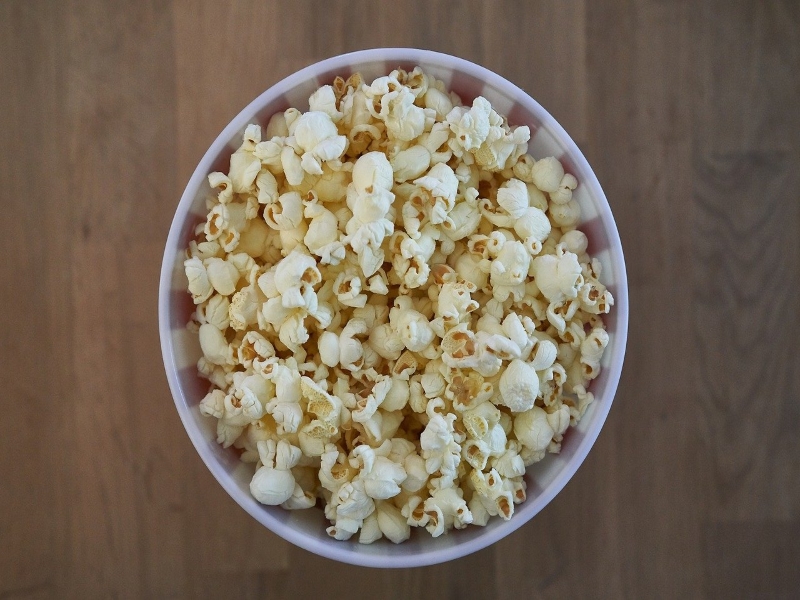
4. Butterfly Popcorn
Popular popcorn known as “butterfly-style” takes on the shape of a butterfly when heated. This kind of kernel corn often develop tiny wings and use them to soar through the air as they pop. The development of the butterfly-style popcorn’s distinctive shapes is interesting to witness in action.
This snack is best enjoyed with some melted butter and salt to taste. If you’re feeling creative, experiment with adding some cayenne pepper, garlic powder, or both to create the ideal flavors.
Because this flake butterfly is quite fragile, it is not a good idea to add excessive topping. Also, t o keep its crispness, it is better to utilize it right away.
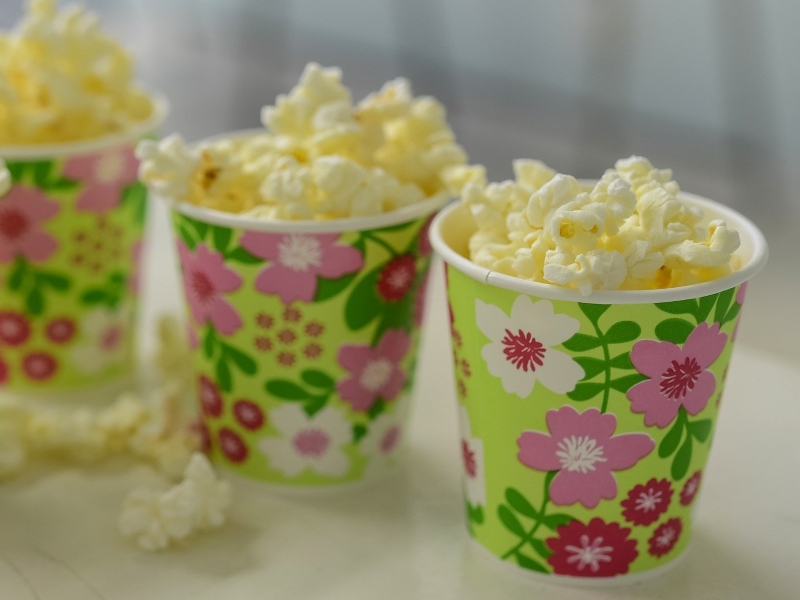
5. Ladyfinger Popcorn
The most delicate popcorn kernel on the market is ladyfinger popcorn. Small and having a thin hull, this variety of corn is ideal for those who wear braces.
Cheddar cheese powder, buffalo wing seasoning mix, blue cheese powder, garlic powder, avocado powder, salt, pepper, and dried cilantro leaves are a few of the additional flavors you can try with.
These kernels are also fantastic as a garnish for baked goods and soups.
Other Types Of Colored Popcorn
Black Kernels/Black Popcorn
Although it is black, when it bursts, it turns white. Commercial development is being done on the kind of popcorn kernel.
Red Kernels/Red Popcorn
Its size is smaller than other kernels and it is a stunning deep red color. This kind of kernel is used commercially, just like the black kernel.
Its flake is white after it explodes and has a little nutty flavor and an unremarkable taste. If you want to eat popcorn with a crunchy texture, then you’ll definitely love this.
Purple Kernels/Purple Popcorn
It is a rich purple color when in the form of a kernel. The kernels have a light white tint and occasional purple patches after detonation. Its flavor is regarded as being the best of all kernels.
Blue Kernels/Blue Popcorn
The blue in the kernels is a deep shade. White popcorn will still be produced after it explodes. Blue kernels are smaller than normal kernels, having a soft, light flake and nutty flavor.
Hulless Popcorn
Popcorn without hulls isn’t really a specific type popcorn. Rather, it is a feature of popped popcorn.
After eating some popcorn, the hard, yellow hull will be trapped in your teeth. Some popcorn has more hulls than other types of popcorn.
Try the hulless popcorn if you don’t like the hulls getting trapped between your teeth.
Popped hullless popcorn typically yields less hulls. This is due to the fact that there are less hulls when the popcorn kernels are thinner.
Gourmet white, baby white, ladyfinger, midnight blue, vintage red, tender white, and gourmet red are a few of the hulless variations.
Larger popcorn varieties like gourmet yellow and gourmet mushrooms are also available.
Popcorn softness and good hull dispersion are strongly related because the hull and texture of the popcorn are frequently related. The resulting lighter and softer popcorn is produced by the thinner hull. As a result, we can categorize popcorn according to the hull type.
Thick Hull Popcorn Kernels
Kernels frequently feature a big popcorn bloom and a thick shell. Popcorn vendors adore this feature. That explains why big hulls are frequently found in popcorn bags at cinema. Popcorn that is hard and crunchy typically has a large hull.
Thin Hull Popcorn Kernels
Because of the thinner shells on the kernels, the popcorn bloom will not be as thick as the hull. Their hulls will explode and shatter into tiny pieces afterward. A thin, tiny hull or no hull is frequently present on popcorn with a soft texture.
Oil Alternatives To Get A Perfect Popcorn
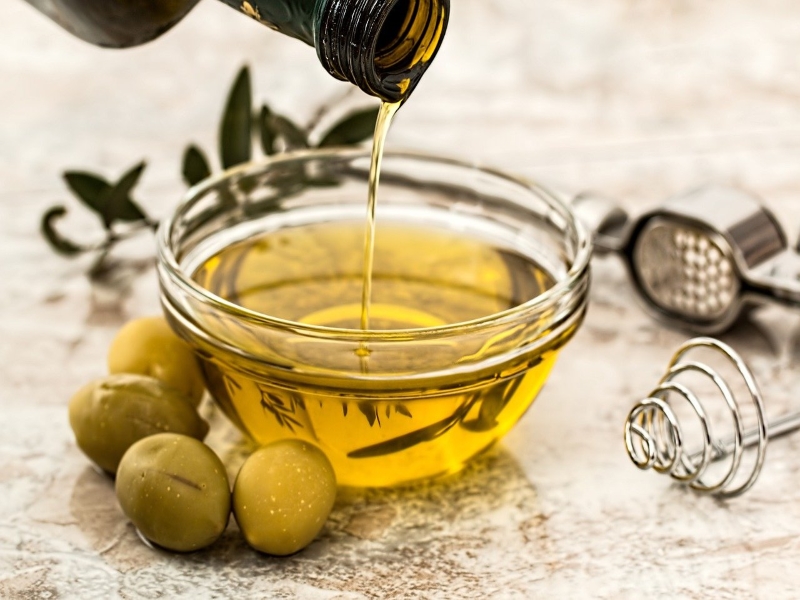
Olive Oil
Olives, a common tree in the Mediterranean region, are used to make olive oil. This oil is commonly utilized for a variety of uses, including the cooking of meals, the production of salad dressings, and even the popping of popcorn.
Olive oil has a bland flavor, so your popcorn won’t have a particular scent that can alter the popcorn’s flavor.
Olive oil can help you combat oxidation, stabilize blood cholesterol levels, and lower your risk of cardiovascular disease.

Avocado Oil
Since the oil from the avocado fruit pulp of Persea Americana has a high smoke point, popcorn may be made with no problem. Avocado oil ensures heart health, decreases cholesterol, and is healthy for your heart.
Additionally, it is thought to be an antioxidant that benefits the eyes and improves the absorption of crucial minerals. You can also eat without worrying about the calories while still getting a robust, creamy buttery flavor.
Canola Oil
Many rapeseed varieties are used to make canola oil, which has less than 2% erucic acid in the fat. It is regarded as a healthy oil due to its comparatively low saturated fat content.
As canola oil has been confirmed to lower the risk of coronary heart disease and not raise the amount of calories, using it to pop popcorn won’t pose any health risks to you. Furthermore, this oil plays a distinctive role in lowering the risk of type II diabetes.

Coconut Oil
The coconut palm fruit’s milk, flesh, and wick are used to extract a food-grade oil. Because it pairs well with popcorn, you should use refined coconut oil over unrefined oil because it has a greater smoke point.
If you consume it in moderation, popping popcorn in coconut oil will help you burn more calories. Movie theater popcorn bags frequently include this oil.
Popcorn will be better than ever if you use coconut oil.
Sunflower Oil
When sunflower seeds are pressed, sunflower oil is produced. Vitamin E, a fat-soluble substance that helps shield the body from harm brought on by aging, is abundant in this oil.
Additionally, eating popcorn with this oil will provide you with the ideal amount of oleic acid, which lowers your risk of heart disease and high blood cholesterol.
Frequently Asked Questions
To avoid the popcorn tasting oily, always use three parts corn to one part oil. Corn, sunflower, and coconut oil are the most widely used.
Garlic powder, garlic salt, grated parmesan, and dried parsley are some of the flavors you can use to enhance the flavor.

